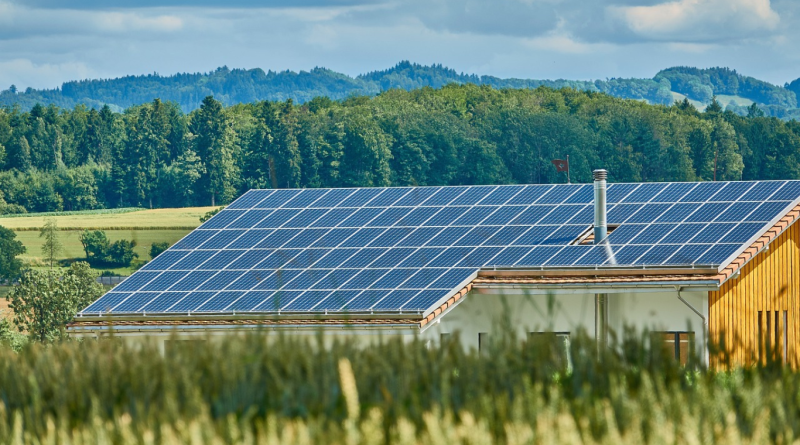Top 10 Best Sustainable Building Practices You Need to Know
As climate change and environmental degradation become increasingly pressing issues, the construction industry is turning to sustainable building practices to minimize its ecological footprint. But what is sustainable building? In essence, it refers to designing and constructing buildings in a way that reduces environmental impact, conserves resources, and promotes occupant well-being. By integrating energy efficiency, eco-friendly materials, and advanced technologies, building for sustainability is no longer just an option—it’s a necessity.
In this article, we’ll explore the top 10 best sustainable building practices that not only benefit the planet but also enhance the quality and efficiency of modern structures.
1. Energy-Efficient Design
Designing buildings to optimize natural light, ventilation, and insulation can significantly reduce energy consumption. Passive solar design, double-glazed windows, and high-quality insulation are crucial elements that minimize the need for artificial heating and cooling. Incorporating renewable energy systems, like solar panels and wind turbines, further enhances energy efficiency, paving the way for net-zero energy buildings that both save costs and reduce carbon footprints.
2. Sustainable Building Materials
Choosing eco-friendly materials reduces environmental impact. Reclaimed wood, bamboo, recycled steel, and low-carbon concrete are great examples of sustainable options. These materials help conserve natural resources, lower energy usage, and minimize waste. Using locally sourced or recycled materials also cuts down on transportation emissions, making the overall construction process greener.
3. Water Conservation Techniques
Sustainable buildings incorporate water-saving systems like rainwater harvesting and greywater recycling. These techniques reduce the demand for fresh water and decrease overall water consumption. Efficient plumbing fixtures, such as low-flow toilets and faucets, also help conserve water, ensuring that buildings use this essential resource more responsibly.
4. Green Roofing and Walls
Green roofs and vertical gardens enhance sustainability by improving insulation, reducing energy usage, and promoting biodiversity. These living systems absorb rainwater, provide natural cooling, and improve air quality. They also offer aesthetic value while contributing to reduced urban heat island effects.
5. Low-Impact Construction Methods
Minimizing construction’s environmental footprint is key to sustainable building. Prefabricated and modular construction methods generate less waste, reduce site disruption, and improve efficiency. Using minimal excavation and protecting existing vegetation also helps preserve natural ecosystems during the building process.
6. Indoor Air Quality Improvement
Ensuring healthy indoor environments is vital. Low-VOC paints, non-toxic materials, and effective ventilation systems promote cleaner air and reduce exposure to harmful chemicals. These practices enhance occupants’ health and well-being, making buildings not only eco-friendly but also healthier to live or work in.
7. Smart Building Technologies
Technology plays a crucial role in optimizing energy efficiency. Smart thermostats, lighting systems, and automated energy management tools help reduce energy consumption by adjusting usage based on real-time conditions. These systems allow for smarter, more responsive building management, improving sustainability outcomes.
8. Renewable Energy Integration
Incorporating renewable energy sources like solar panels, wind turbines, and geothermal systems makes buildings self-sufficient. These technologies drastically cut energy costs and reduce dependence on fossil fuels. By generating clean energy, buildings can even return excess power to the grid, supporting broader energy sustainability.
9. Waste Reduction and Recycling
Reducing construction waste is essential to sustainable building. This includes reusing materials from demolition, recycling construction debris, and implementing sustainable disposal practices. Reducing on-site waste lowers landfill contributions and makes the entire building process more environmentally friendly.
10. Certifications and Standards
Certifications like LEED, BREEAM, and WELL help ensure that buildings meet sustainability benchmarks. These standards evaluate aspects like energy efficiency, resource use, and indoor environmental quality. Pursuing these certifications demonstrates a commitment to green building and ensures accountability throughout the process.
Sustainable building practices are essential for reducing the environmental impact of construction while enhancing the efficiency and quality of modern structures. From energy-efficient design and eco-friendly materials to smart technologies and renewable energy integration, these methods not only lower carbon footprints but also promote healthier, more resilient buildings. As climate change accelerates, adopting these practices is not just a choice—it’s a necessity for creating a more sustainable future.
